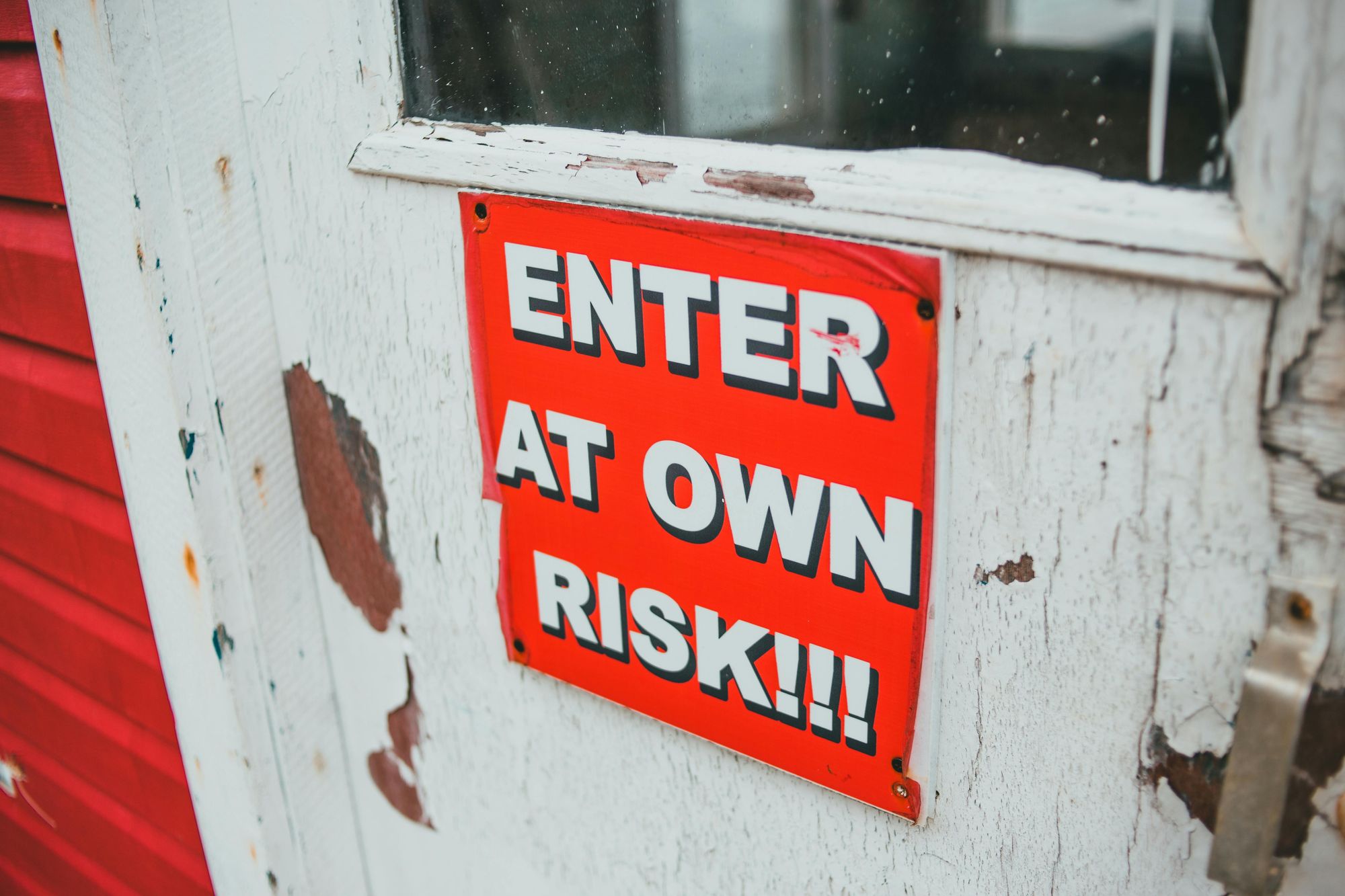ICOs are a way for startups to raise money by selling digital tokens to investors. These tokens often give access to a future service or product. On the other hand, STOs represent ownership in an asset, such as shares in a company, real estate, or other investments.
Introduction
Ever since the rise of cryptocurrency and blockchain, various companies have been devising diverse ways to raise funds. These methods range from token airdrops and venture capital to crowdsales and grant programmes.
However, the two most popular of these methods are security token offerings (STOs) and initial coin offerings (ICOs). Many companies, including AmaZix, ICOBench, Blockchangers, Argon Group, and Bitcoin Suisse, have promoted these methods, making them famous over the years.
In this article, we will discuss STOs and ICOs, how they work, and their benefits to the public and the companies that set them up.
What is an Initial Coin Offering (ICO)?
An Initial Coin Offering (ICO) is a fundraising method used by startups and companies to raise capital for new projects, typically in the cryptocurrency and blockchain space. In an ICO, a company creates and sells digital tokens or coins to investors in exchange for money, usually in popular cryptocurrencies like Bitcoin or Ethereum.
These tokens can represent various things, such as a share in the project, a utility within the platform, or even access to the project's services. An ICO is like a crowdfunding campaign, but instead of receiving a product or service in return for your investment, you receive digital tokens.
ICOs have been very popular because they offer a way for companies to raise large amounts of money quickly and with relatively few regulations compared to traditional funding methods like Initial Public Offerings (IPOs). For example, in 2017, the ICO project, Filecoin, raised over $257 million in just one month.

What is a Security Token Offering (STO)?
A Security Token Offering (STO) is a way for companies to raise money by issuing digital tokens that represent ownership in real assets like stocks, real estate, or bonds. These tokens are created using blockchain technology, which is a secure and transparent way to record transactions. Unlike traditional shares, security tokens are digital and can be easily traded on online platforms.
Security tokens can be an attractive investment because they combine the benefits of traditional securities with the advantages of blockchain technology. For instance, transactions can be completed quickly and efficiently, and ownership records are transparent and hard to tamper with.
As of 2023, the Tokenized Securities Market was valued at $202 Billion, and it's expected to grow significantly, reaching $301 billion in 2030, as more companies and investors recognise their potential.
Features of ICOs
1. Fundraising Potential:
Initial Coin Offerings (ICOs) have transformed the way startups raise capital. By offering new cryptocurrencies or tokens to investors, businesses can quickly secure funding without traditional methods like venture capital or bank loans.
2. Accessibility:
One of the most attractive features of ICOs is their accessibility. Unlike traditional investment opportunities, which often require significant capital and are limited to accredited investors, ICOs are open to anyone with internet access and some cryptocurrency, usually Bitcoin or Ethereum.
3. High Risk, High Reward:
ICOs offer the potential for high returns, but they also come with significant risks. The lack of regulation and oversight means that investors also face the risk of scams and project failures.
4. Lack of Regulation:
ICOs operate in a largely unregulated space, which can be both an advantage and a disadvantage. On the one hand, the lack of regulatory hurdles makes it easier for startups to launch their projects and for investors to participate. On the other hand, this lack of oversight means there's little protection for investors if something goes wrong.
5. Use of Blockchain Technology:
ICOs use blockchain technology to create and distribute tokens. This technology ensures transparency and security, as all transactions are recorded on a public ledger that is difficult to alter. This transparency builds trust among investors and helps prevent fraud, as all ICO transactions are publicly verifiable.
6. Utility Tokens:
Most ICOs issue utility tokens, which give investors access to a company's product or service rather than a share in the company itself. These tokens can be used within the issuing company's ecosystem, like using Binance Coin (BNB) on the Binance exchange for trading fee discounts. The utility aspect of these tokens often drives demand, which can increase their value if the project becomes successful.
7. Global Reach:
ICOs have a global reach, allowing companies to attract investors from around the world. This broadens the pool of potential investors and increases the likelihood of a successful fundraising campaign. The global nature of ICOs also promotes the development of international communities around new projects, promoting collaboration and innovation across borders.
Features of STOs
1. Regulatory Compliance:
STOs comply with financial regulations, which means they follow strict rules set by regulatory bodies like the SEC in the United States. This compliance helps protect investors from fraud and ensures that the companies issuing the tokens are legitimate. For example, all information about the company and the investment opportunity must be fully disclosed, similar to traditional securities.
2. Asset-Backed Tokens:
One of the defining features of STOs is that the tokens are backed by real assets. This could be shares in a company, real estate, or other tangible items. This backing gives the tokens fundamental value, unlike many ICOs, where the tokens' value is often speculative.
3. Investor Protection:
Because STOs are regulated, investors have legal recourse if something goes wrong. This added layer of security makes STOs a safer investment compared to ICOs. Also, STOs often require investor accreditation, meaning only those who meet certain financial criteria can invest, further ensuring that investors are knowledgeable and capable.
4. Transparency:
Companies must provide detailed information about their business, financials, and the specific rights that the tokens confer. This level of detail helps investors make informed decisions. For example, an STO might include audited financial statements and clear descriptions of how the raised funds will be used.
5. Global Accessibility:
STOs offer global accessibility, allowing investors from different parts of the world to participate. This broad access helps companies reach a larger pool of potential investors, increasing the likelihood of successfully raising capital. However, companies must also ensure they comply with the regulations of each country in which they accept investments.

6. Lower Costs:
Compared to traditional fundraising methods, STOs can be more cost-effective. They often involve fewer intermediaries, such as brokers or banks, reducing the costs associated with raising capital. This efficiency can make STOs an attractive option for startups and smaller companies looking to reduce expenses.
7. Liquidity:
Since security tokens can be traded on secondary markets, investors have the ability to sell their tokens relatively easily compared to traditional securities. This feature can be particularly appealing to investors looking for flexibility.
8. Fractional Ownership:
By tokenizing assets, STOs allow investors to own a fraction of an asset, such as a piece of real estate or a percentage of a company. This feature makes investing more accessible to people who might not have the capital to buy entire assets outright.
How Do ICOs Work?
Step 1. Project Creation and Whitepaper:
The first step in an ICO is creating a project. The team behind the project writes a detailed document called a whitepaper. This whitepaper explains the project's purpose, the problem it aims to solve, how the technology works, the team involved, and the amount of money needed. It also details how many tokens will be issued and what benefits they offer investors.
Step 2. Pre-ICO Stage:
Before the main ICO event, there might be a pre-ICO stage. This is a private sale where tokens are sold to early investors at a discounted rate. The purpose of the pre-ICO is to raise initial funds to cover marketing and development costs before the public sale.
Step 3. Marketing and Promotion:
Once the whitepaper is ready, the project team starts marketing the ICO to attract potential investors. This includes creating a website, using social media, and engaging with the cryptocurrency community through forums and events.
Step 4. Token Sale:
During the ICO, investors can buy the project’s tokens using other cryptocurrencies like Bitcoin (BTC) or Ethereum (ETH). This period can last from a few days to a few weeks. The price of tokens might be fixed or can vary based on the amount raised. For example, if the ICO aims to raise $10 million and offers 1 million tokens, each token would be priced at $10.
Step 5. Listing on Exchanges:
After the ICO ends, the tokens are distributed to investors. The next step is to list these tokens on cryptocurrency exchanges. This allows investors to trade the tokens on the open market. The listing process can affect the token’s price as more people start buying and selling it.
Step 6. Project Development:
With the funds raised from the ICO, the project team continues to develop their product or service. Investors hope the project will succeed, increasing the value of the tokens they hold. Regular updates and transparency from the team help maintain investor confidence.
Step 7. Regulation and Compliance:
ICOs operate in a regulatory gray area in many countries. Some regions have strict regulations, while others are more lenient. Before embarking on an ICO, both the project team and investors need to understand the legal implications.
How Do STOs Work?
Step 1. Preparation and Planning:
Before launching an STO, a company needs to plan carefully. This involves determining the type of security token to issue, whether it’s equity (shares of the company), debt (similar to bonds), or asset-backed tokens (linked to tangible assets like real estate). The company also needs to comply with the relevant regulations in its jurisdiction, which means legal consultation is required.
Step 2. Regulatory Compliance:
Unlike ICOs, STOs must adhere to strict regulations set by financial authorities. This involves thorough documentation, including a prospectus that details the offering, the company’s financials, and the rights of the token holders. These documents are then submitted to regulatory bodies such as the U.S. Securities and Exchange Commission (SEC) for approval.
Step 3. Token Creation:
Once the legal groundwork is laid, the company creates the security tokens using blockchain technology. These tokens are typically created on platforms like Ethereum, which support smart contracts. Each token is a digital representation of the ownership or investment stake and is encoded with the relevant legal and financial rights.
Step 4. Marketing and Promotion:
With the tokens created and regulatory approval in place, the company begins marketing the STO to potential investors. This is done through various channels, including online campaigns, social media, and investment forums. The goal is to attract accredited investors who meet the legal requirements for participating in the STO.
Step 5. Token Sale:
During the token sale, investors purchase the security tokens using fiat currency or cryptocurrencies. The sale can be conducted through the company’s website or a partnering exchange platform that specialises in STOs. The process is transparent, with the terms of the sale and investor rights clearly outlined.
Step 6. Post-Sale and Token Management:
After the token sale, the company uses the raised funds for its stated purpose, whether developing a new product, expanding operations, or other business activities. Investors hold their tokens, which can often be traded on secondary markets. Token holders may receive dividends, interest, or other returns based on the performance of the underlying asset or company.
Step 7. Ongoing Compliance and Reporting:
Even after the STO, the company must maintain compliance with regulatory requirements. This includes regular reporting to financial authorities and keeping investors informed about the company’s performance. This ongoing transparency helps build trust and ensures the security of the investment.
Key Differences Between ICOs and STOs
1. Definition and Nature:
ICOs are a way for startups to raise money by selling digital tokens to investors. These tokens often give access to a future service or product but don't usually offer ownership or profit-sharing rights. On the other hand, STOs represent ownership in an asset, such as shares in a company, real estate, or other investments. These tokens are considered securities and are backed by real-world assets, making them more regulated and secure.
2. Regulation:
ICOs are often unregulated or lightly regulated, making them riskier for investors. Because of this, many ICOs have been associated with fraud or scams. STOs must comply with strict regulations, such as those set by the Securities and Exchange Commission (SEC) in the United States. This regulatory oversight protects investors and ensures that the issuing company is transparent and follows the law.
3. Investor Rights:
When you buy into an ICO, you typically don't get any ownership in the company or a say in how it is run. You might get tokens that can be used on a platform or service once it launches. In contrast, buying into an STO often gives you actual ownership rights, like receiving dividends or having voting rights in the company. This makes STOs more similar to traditional stocks or bonds.

4. Use of Funds:
The money raised through ICOs is often used to develop a new blockchain project or platform. The investors are usually early adopters who hope the value of the tokens will increase as the project succeeds. STOs raise funds for projects that already have some tangible value or backing, such as real estate, corporate equity, or debt instruments. This often makes STOs less speculative and more appealing to traditional investors.
5. Accessibility:
ICOs are generally open to anyone with internet access and some cryptocurrency, making them easy to participate in but also prone to scams. STOs, however, are usually only available to accredited investors who meet certain financial criteria. This ensures that investors have a level of financial sophistication and can handle the risks involved.
6. Market Perception:
Due to numerous cases of fraud and failure, ICOs have gained a reputation for being high-risk. As a result, they can attract more speculative investors looking for quick gains. STOs, with their regulatory backing and real-world asset ties, are considered safer and more legitimate investment opportunities. This makes them more attractive to institutional investors and those looking for long-term, stable returns.
Pros and Cons of ICOs
Pros of ICOs
1. Easy Access to Capital:
One of the biggest advantages of Initial Coin Offerings (ICOs) is the ability to raise large sums of money quickly. Unlike traditional funding methods, such as venture capital, which can be time-consuming and require extensive paperwork, ICOs allow startups to tap into a global pool of investors without much hassle.
2. Equalised Investment Opportunities:
ICOs open up investment opportunities to a wider audience. Traditional investments are often limited to wealthy individuals or institutions, but anyone with internet access and some cryptocurrency can participate in an ICO. This means more people can support and benefit from innovative projects.
3. Liquidity:
Tokens bought in an ICO can often be traded on cryptocurrency exchanges shortly after the ICO ends. This provides liquidity, meaning investors can quickly sell their tokens if they need cash. In contrast, traditional investments like stocks or bonds can take longer to sell.
4. Low Entry Barriers:
ICOs typically have lower entry barriers compared to other investment avenues. Investors can participate with relatively small amounts of money. This inclusiveness encourages more people to invest in emerging technologies and ideas, fostering innovation and entrepreneurship.
Cons of ICOs
1. Regulatory Uncertainty:
One major drawback of ICOs is the lack of regulatory clarity. Many countries have not yet established clear regulations for ICOs, leading to potential legal issues for both issuers and investors. This uncertainty can result in project delays or shutdowns.
2. High Risk of Scams:
The ICO space has been plagued by scams and fraudulent schemes. Without strict regulations, it's easier for scammers to launch fake ICOs, take investors' money, and disappear.
3. Market Volatility:
The cryptocurrency market is known for its extreme volatility, and ICO tokens are no exception. The value of tokens can fluctuate wildly due to market sentiment, speculation, and regulatory news. This can result in substantial losses for investors if token prices drop suddenly.
4. Technical Complexity:
Investing in ICOs often requires a basic understanding of blockchain technology and cryptocurrency wallets. This technical barrier can discourage less tech-savvy investors from participating. Also, managing and securing digital assets can be challenging, with risks of hacking and loss of funds if not appropriately handled.
Pros and Cons of STOs
Pros of STOs
1. Regulation and Compliance:
STOs are regulated by financial authorities, which means they must comply with existing securities laws. This provides a level of security and trust for investors, as they are protected by the same regulations that govern traditional securities.
2. Investor Protection:
Because STOs are subject to strict regulations, there is a higher level of investor protection. This reduces the risk of fraud and provides legal recourse if something goes wrong, making them a safer investment than ICOs.
3. Access to Global Markets:
STOs allow companies to reach a global pool of investors. This can be particularly beneficial for startups and smaller companies looking to access international capital without the constraints of traditional financial markets.
4. Transparency:
The regulatory requirements for STOs ensure a high level of transparency. Companies must provide detailed information about their business, financial health, and the terms of the token offering. This transparency helps investors make better-informed decisions.
5. Liquidity:
Security tokens can be traded on secondary markets, providing liquidity for investors. This means that investors can buy and sell their tokens relatively easily, compared to traditional investments that may be harder to sell quickly.
Cons of STOs
1. Regulatory Hurdles:
The same regulations that protect investors can also be a hurdle for companies. Complying with securities laws can be costly and time-consuming, especially for startups with limited resources. This can slow down the fundraising process and increase overall costs.
2. Limited Investor Base:
Due to regulatory requirements, STOs often restrict who can invest. In many cases, only accredited or institutional investors are allowed to participate, limiting the potential investor base and excluding many retail investors.
3. Complexity:
The process of launching an STO is complex. Companies need to navigate a maze of legal, technical, and financial requirements, which can be daunting and require specialised knowledge and expertise. This complexity can discourage some companies from pursuing an STO.
4. Market Volatility:
Like all investments, security tokens are subject to market fluctuations. While they offer more stability than ICOs, they can still be volatile. Investors need to be aware that the value of their investment can go up or down.
5. Technological Risks:
STOs rely on blockchain technology, which, while secure, is not immune to technical issues. Problems like smart contract bugs or hacking can pose risks to both companies and investors.

Takeaway
Both ICOs and STOs offer unique opportunities for raising funds through blockchain technology. ICOs provide easy access and potentially high returns but come with high risk due to lack of regulation. STOs, on the other hand, offer more security and investor rights at the cost of regulatory hurdles and limited accessibility.
When deciding between investing in an ICO or an STO, you should always consider the regulatory environment, the rights provided by the tokens, and your own risk tolerance. When you have figured out all that, you can make your decision.
FAQs
Q1. What is the main difference between an ICO and an STO?
A1. The main difference is that ICOs are usually unregulated and offer utility tokens, while STOs are regulated and offer security tokens that represent ownership or rights in an asset.
Q2. Are ICOs legal?
A2. The legality of ICOs varies by country. Some countries have banned them, while others allow them with certain regulations.
Q3. Can anyone invest in an STO?
A3. Not always. Due to regulatory requirements, STOs often restrict investments to accredited or institutional investors.
Q4. Why are STOs considered safer than ICOs?
A4. STOs are considered safer because they are regulated, which reduces the risk of fraud and provides more transparency and investor protection.
Q5. Can STOs offer high returns like ICOs?
A5. Yes, STOs can offer high returns, but they are generally considered to be more stable investments due to regulatory oversight.
Q6. What happens if an ICO fails?
A6. If an ICO fails, investors may lose their money as there is often no regulatory body to ensure refunds or compensation.
Q7. Do STOs pay dividends?
A7. Some STOs offer dividends or other profit-sharing mechanisms similar to traditional stocks.
Q8. How can I invest in an ICO or STO?
A8. To invest in an ICO, you typically need cryptocurrency like Bitcoin or Ethereum. For STOs, you may need to go through a regulated platform and meet certain investor criteria.
Q9. Are there any well-known successful ICOs?
A9. Yes, Ethereum is one of the most successful ICOs, raising $18 million in 2014 and now being one of the leading cryptocurrencies.
Q10. What should I look for before investing in an ICO or STO?
A10. Research the project, team, regulatory compliance, and use of funds. For STOs, check the regulatory status and legal rights associated with the tokens.
This article does not contain investment advice or recommendations. Every investment and trading move involves risk, and readers should conduct their own research when making a decision.
